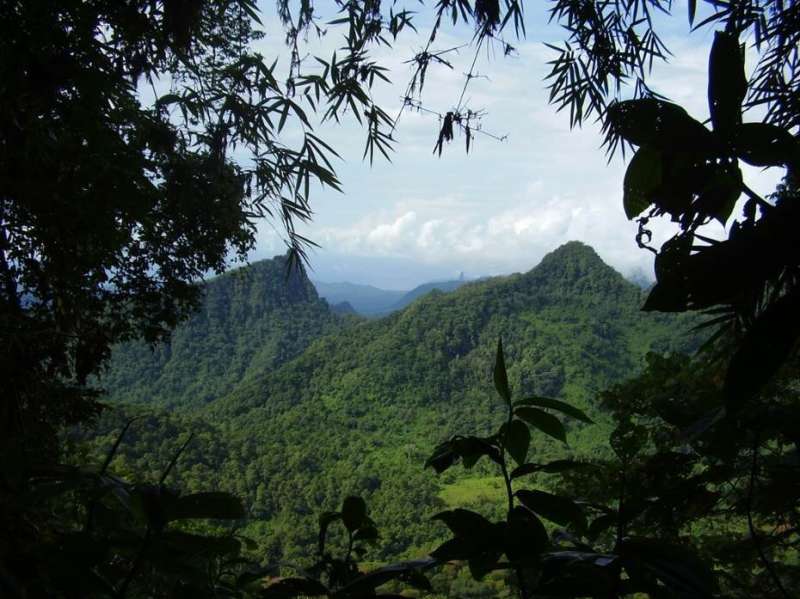Island biodiversity best conserved in inaccessible landscapes

Islands contribute enormously to global biodiversity, but are threatened by human activities. To understand why some islands have been more impacted since first human settlement than others, a new study compared environmental and societal variables of 30 islands in the Eastern Atlantic Ocean. The study by an international team of scientists, including ecologists from the University of Amsterdam, is now published in the scientific journal Anthropocene. The research shows that terrain accessibility explains most of the differences in native vegetation cover between islands, while modern human population density had a negligible correlation, suggesting that topography constrains human impacts on biodiversity.
Human impacts in biodiversity hotspots
Island species and ecosystems are currently highly threatened by human activities and often confined to small patches of remaining native vegetation. Human impact takes place not only in the present but started several centuries (and in some cases millennia) ago when people first settled these previously uninhabited islands. People removed the native vegetation cover to start agricultural- practices, hunted species to extinction, and introduced exotic species. But why are some islands more impacted than others by human activities?
To answer this question, an international research team studied 30 islands in five archipelagos in the Atlantic Ocean: the Azores, Madeira, Canary Islands, Cape Verde, and the Gulf of Guinea Islands.The researchers performed a statistical analysis on several variables related with topography, climate, human activities and demography. "Our results show that those islands with a relatively large extent of remaining native ecosystems, generally have a more rugged topography, which suggests that biodiversity on islands with inaccessible landscapes is sheltered from human activities," explains Sietze Norder, first author of the study and researcher at both the Institute for Biodiversity and Ecosystem Dynamics (University of Amsterdam, the Netherlands) and the Centre for Ecology, Evolution and Environmental Changes—cE3c (University of Lisbon and University of the Azores, Portugal).
Interdisciplinary approach
Although topography seems to play a major role, the modern patterns of native vegetation might also partly reflect changes in demography and socioeconomic trends since first human settlement. Therefore the research team gathered data to reconstruct historical demographic and socioeconomic changes in these archipelagos over the last centuries. This historical information (qualitative data) was used to contextualize the statistical findings (quantitative data).
Previous studies that relied either on qualitative approaches or quantitative approaches sometimes reached contrasting conclusions about the relative importance of environmental and societal drivers of land cover change. Norder: "Our study shows that interdisciplinary approaches that integrate quantitative and qualitative information have great potential to enhance our understanding of human-environment interactions."
Similar to the islands in the Eastern Atlantic, islands worldwide have been largely transformed by human activities. Human impacts are not restricted to the removal of native vegetation, but include other changes as well, such as the introduction of exotic species, extinction of unique island species, and abiotic aspects such as soil erosion. "Rather than solely registering these changes on individual islands, the next step is to assess for different regions across the globe how and why human impacts on biodiversity differ," concludes Norder.
More information: Sietze J. Norder et al. Global change in microcosms: Environmental and societal predictors of land cover change on the Atlantic Ocean Islands, Anthropocene (2020). DOI: 10.1016/j.ancene.2020.100242
Provided by University of Amsterdam


















